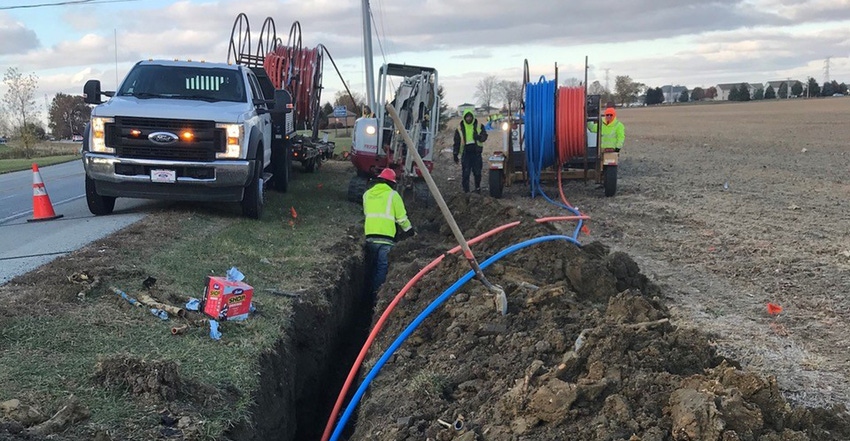
Freeport in Shelby County, Ind., is about as rural as it gets. Yet 80 residences and farms located there have access to high-speed internet through fiber optic cable. Residents pay a monthly fee to get the service, but there was no installation cost. The behind-the-scenes story explaining why this tiny community has fiber optic internet and more developed areas of Indiana don’t speaks volumes about how rural broadband is progressing slowly throughout the state.
“Our cooperative ran 4 miles of fiber optic cable to serve two cell towers in the area, and whenever we run fiber optic, we provide ‘on ramps’ to the high-speed internet to every residence along the way,” explains Jill Snyder, director of business and economic development for NineStar Connect. Originally serving Hancock County, this cooperative, with roots going back 125 years on the telecommunications side, now sometimes partners with other cooperatives to serve members outside the boundaries of Hancock County.
Two Hancock County utilities, Central Indiana Power and Hancock Tel-com, merged in 2011 to form NineStar Connect, Snyder says. Since then, water and sewer utilities were added, making it a unique co-op.
“We also work with Intelligent Fiber Network, formerly Indiana Fiber Network, to provide fiber optic services over a larger area,” she adds. “We have fiber installations touching 10 counties in Indiana.”
IFN is a member-owned company, working with utilities all over Indiana, primarily taking fiber optic cable into areas it wouldn’t go otherwise.
“REMCs were formed to take electricity to rural areas decades ago because it’s more expensive to deliver service in less-populated areas,” Snyder says. “Co-ops like ours are using the same principle to bring quality, high-speed internet to rural areas.”
Behind the scenes
Snyder explains how it works: Cell towers erected across the country need fiber optic cable to handle data-intense transmissions that can’t be handled by cellular alone. When a major cellular provider puts out bids for fiber going to towers, it usually wants one company to bid on dozens or more of the tower locations at once. If a big national company gets the bid, it runs fiber optics to the towers but doesn’t worry about providing “on-ramp” access to rural residents, because in the short term, there’s no immediate payback on the investment.
Working with Intelligent Fiber Network, smaller cooperatives such as NineStar Connect are able to get “pieces” of a bundle of towers, which IFN assembles over a larger territory and wins the bid to provide fiber.
“We’re more concerned about long-term investment and helping our customers, who are co-op members,” Snyder says. “The contract to provide fiber to towers helps us afford the project, and then access to local residences helps rural economies in the long run.”
Other small communities in Shelby, Rush and Henry counties are also getting 1-gigabit fiber optic internet through NineStar Connect. Joint projects with Rush Shelby Energy and Henry County REMC make it possible. Through a joint project with Johnson County REMC, NineStar Connect helped provide fiber optic internet to the Indiana FFA Leadership Center and nearby Trafalgar, another small town, recently.
“That’s why you can sit inside the lodge at the Indiana FFA Center in the middle of the woods and have high-speed internet,” Snyder concludes.
About the Author(s)
You May Also Like




